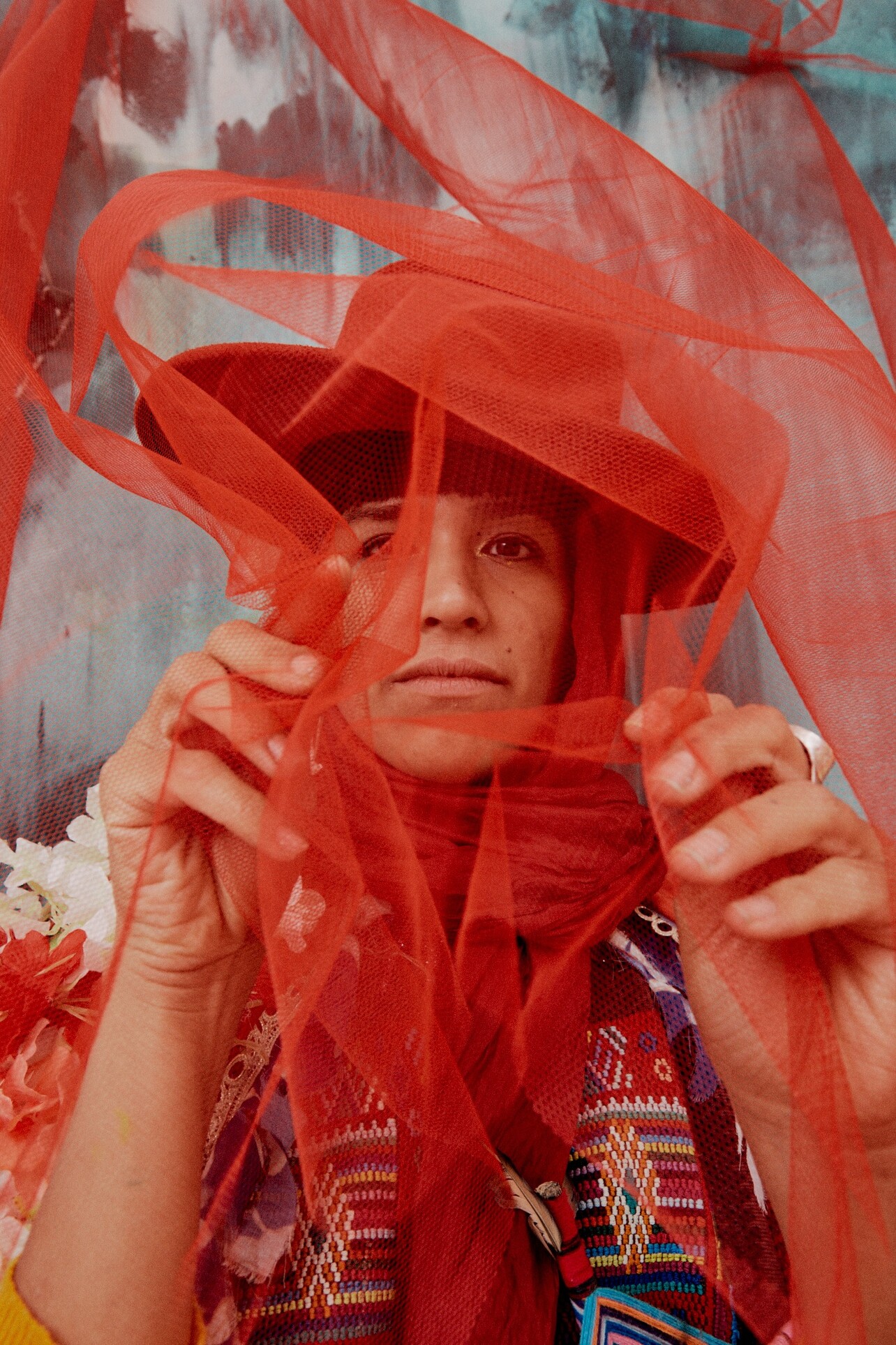Ju Mu Monster
area: Visual multidisciplinary Art
Key Facts
nationality
Germanyarea
Visual multidisciplinary Artresidence
Berlinrecommending institution
Jan Arnold Gallerytime period
December 2022 - December 2022Raised in Hanover, with Peruvian-Chilean roots, Ju Mu now lives and works as a freelance artist in Berlin. Shamanism and the connection between humans, the spirit world and nature are integral parts of her work and serve as inspiration for her masks, canvases or murals. For her works she uses everything that comes to her fingers and thus creates a new, surreal world.
Carnaval y Libertad
Concept: Traditional dances and ritual celebrations in the context of colonialism and cultural resistance. I continue my study for the residence in the MuseumsQuartier.
During the colonization of South, Central, and North America, Catholicism and the conversion of the indigenous population of the Americas played a central role in colonial strategy. Ancestor worship, traditional festivals, and ritual practices were violently suppressed by the missionaries and conquistadors. The indigenous populations of Latin America hid their deities and beliefs under the guise of the Catholic Church and its patron saints, appropriating and reinterpreting them while holding on to their own cultural wealth. In this way, the indigenous peoples managed to save their deities and rituals from the missionaries. A fusion of different forms of religious practice and beliefs took place, which can still be seen and felt throughout the continent today.
The exhibition is inspired by such indigenous self-empowered reinterpretations of ritual festivals and dances and are presented in the form of images and masks. The creative genius of indigenous communities have had a lasting influence on my art. I reflect this influence in the form of patterns, colors, techniques and costumes.
In artworks exhibited here, the dances of the Coyolillo Carnaval, Matachine (Mexico)played a major role, as well as the Virgin of Candelaria (Puno Peru), Carnival and Yawar Festival (Perú). The connection to the mother nature Pacha Mama is always present.
Carnaval
Originally, Carnaval is related to harvest festivals and ancestor worship. Religious symbolism and beliefs are expressed through dances and music. But behind the colorful spectacle, the expression of a complex belief system and cultural resistance.
Oruro, Bolivia: To this day, traditional rites and the indigenous language are used in carnival.









